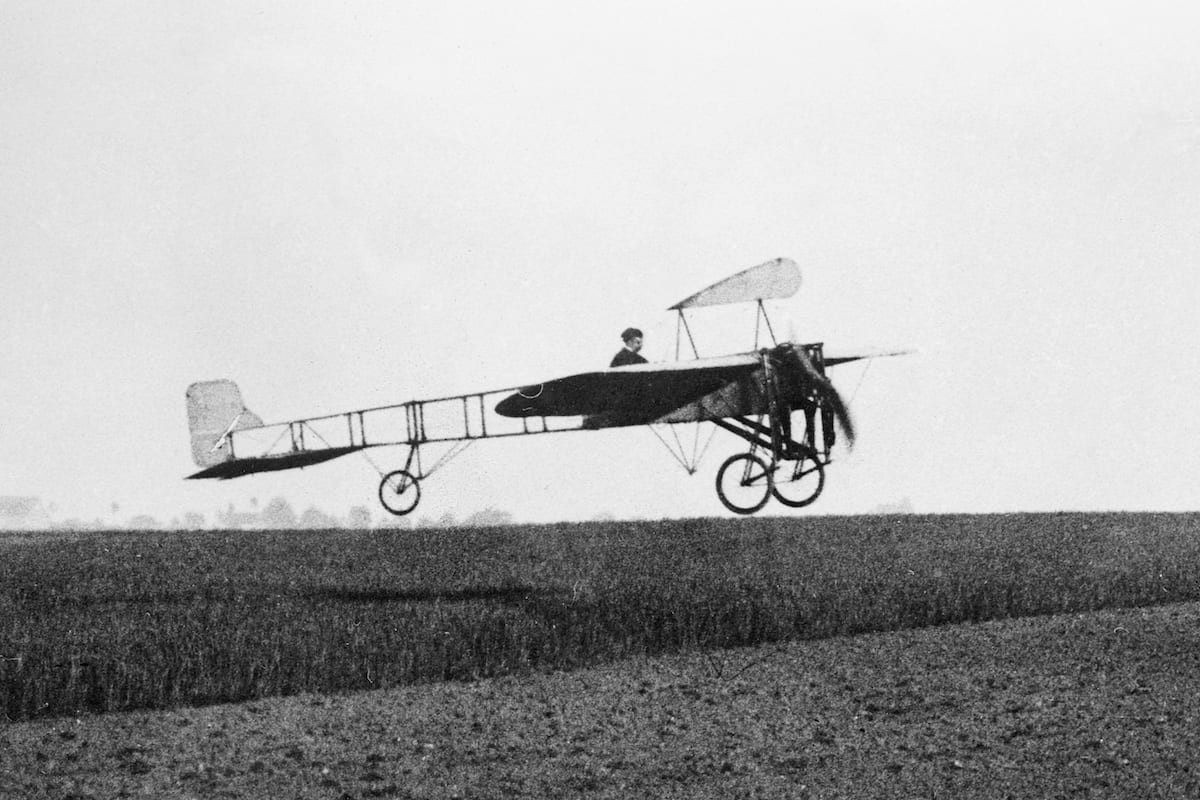The cockpit, the nerve center of any aircraft, holds a surprisingly complex history. WHY.EDU.VN dives into the etymological origins of “Why Cockpit Is Called Cockpit,” exploring the competing theories and historical evidence that explain this iconic aviation term. Discover the surprising connections to cockfighting, nautical terminology, and the early days of flight, ultimately uncovering the most plausible explanation for the cockpit’s name through aviation history, early aircraft designs, and even the influence of boat terminology. Unlock aviation knowledge and gain a better understanding of avionic systems, flight controls, and pilot terminology.
1. Unraveling the Mystery: The Three Main Theories Behind “Why Cockpit is Called Cockpit”
The question of “why cockpit is called cockpit” leads us down a fascinating historical rabbit hole. Interestingly, the word “cockpit” first appeared in print in the 1580s, referring to the arena for cockfights. While seemingly unrelated to aviation, this origin point is crucial to understanding the evolution of the term. There are three main theories that attempt to explain how the word “cockpit” transitioned from describing an area for bird fights to the control center of an airplane.
1.1 The Control Center Hypothesis: From London Theater to Aircraft
This theory, supported by etymologists like Robert Barnhart, suggests that the word “cockpit” evolved to become a synonym for a control center, eventually finding its way into aviation terminology. The story begins in 1635 when a London theater called The Cockpit was demolished to make way for buildings serving King Charles I’s cabinet. Londoners continued to refer to the new complex as “the cockpit,” carrying the name from the original theater, which, in turn, was named after an actual cockfighting site. This connection suggests a gradual shift in meaning, with “cockpit” becoming associated with a central hub or control point, predating the invention of aircraft by hundreds of years. The evolution of language provides a fascinating look at the changing use and adaptability of the English language.
1.2 The Blood and Guts Hypothesis: A Gruesome Battlefield Metaphor
The second theory posits a more visceral origin, linking “cockpit” to the brutal realities of combat. During the 1700s, soldiers began using “cockpit” as a metaphor for a site of intense and bloody fighting, especially in confined spaces. The Word Detective website suggests that World War I pilots adopted this term to describe the cramped and often dangerous operating quarters of their fighter planes. The small, enclosed space where pilots engaged in aerial combat, often with deadly consequences, seemed to fit the existing metaphor of the “cockpit” as a place of struggle.
Adding to this grim association, the term was also used in the 18th century to describe the area below decks on a ship where wounded sailors were treated during battle. This “cockpit” was where the ship’s surgeon and his assistants performed their work, a scene often filled with blood and suffering. This nautical use further reinforces the idea of the “cockpit” as a space associated with intense activity and potential danger.
1.3 The Nautical Connections Hypothesis: From Coxswain to Captain
The third theory moves away from violence and towards nautical origins, proposing that “cockpit” derives from the steering compartment of small boats. The word “cockswain,” referring to the person in charge of a small vessel, is key to this explanation. “Cock” is an Old English term for a small boat, and “swain” means servant, thus a “cockswain” is a boat servant. Over time, the steering compartment where the cockswain sat became known as the “cockpit.” As early aviation borrowed many terms from maritime traditions, it’s plausible that “cockpit” was adopted to describe the pilot’s compartment in an aircraft. The use of nautical terms like “knot,” “port,” and “starboard” in aviation further supports this connection between the sea and the sky.
2. Historical Evidence: Tracing the First Use of “Cockpit” in Aviation
Sorting through these competing theories requires examining early aviation literature to pinpoint the first documented use of “cockpit” in relation to aircraft. When did the term first appear, and in what context? Was it associated with complex flight decks, aerial combat, or nautical terminology?
2.1 Victor Lougheed: The Father of the Aviation Cockpit?
The earliest printed reference to “cockpit” in aviation discovered so far appears in Victor Lougheed’s 1909 book, “Vehicles of the Air.” This groundbreaking work discusses aeroplane seating for pilots and passengers, noting that “some of the more advanced craft are appearing with very comfortable arrangements for seating the operator, as is particularly evidenced in the boat-like cockpits provided in the Bleriot, Antoinette, and R.E.P. machines.” This quote is significant for several reasons. First, it places the term “cockpit” in aviation context just six years after the Wright brothers’ first flight. Second, it directly links the aviation cockpit to the “boat-like” cockpits of early aircraft, suggesting a nautical influence.
Lougheed’s influence on early aviation cannot be overstated. As the founder of the Society of Automotive Engineers and a prolific writer on aeronautical engineering, he was a leading figure in the field. He designed engines, wings, and propellers, held numerous patents, and his “Vehicles of the Air” was a comprehensive and influential text. Furthermore, Lougheed was the older brother of Allan and Malcolm Lougheed, the founders of the Lockheed Aircraft Company. Given his prominent role in early aviation and his early use of the term “cockpit” in a nautical context, Victor Lougheed emerges as a strong candidate for the “father of the cockpit.”
2.2 The Evolution of Cockpit Design: From Open Wings to Enclosed Spaces
Prior to 1909, most pilots were seated on open wings or in chairs attached to struts, with little or no protection from the elements. As aircraft designs evolved, enclosed compartments began to appear, offering pilots a more sheltered and controlled environment. These early “cockpits” resembled the open cockpits of small boats, further strengthening the nautical connection. The need for a specific term to describe this enclosed space likely contributed to the adoption of “cockpit” from maritime language. By 1915, “cockpit” was in common use in numerous aviation books, solidifying its place in the aviation lexicon.
3. The Great Debate: Flight Deck vs. Cockpit
While “cockpit” has been the standard term for decades, the FAA has recently introduced “flight deck” as a replacement in its publications and training materials. This shift reflects a broader effort to use more inclusive and sensitive language, but it has also sparked debate within the aviation community.
3.1 The FAA’s Perspective: Modernizing Aviation Language
In a memo titled “What’s New and Upcoming in Airman Testing,” the FAA announced that “cockpit” would be replaced with “flight deck” in the Aviation Instructor’s Handbook and other resources. The FAA also replaced “student” with “learner,” reflecting a trend in higher education. While the FAA’s rationale for the “student” to “learner” shift is clear, the reasoning behind the “cockpit” to “flight deck” change is less defined. It appears to be part of a broader effort to modernize aviation language and be more sensitive to the connotations of certain words.
3.2 A Pilot’s Perspective: Tradition vs. Progress
While some pilots appreciate the effort to modernize aviation language, others are hesitant to abandon the traditional term “cockpit.” Many pilots feel that “flight deck” is more appropriate for larger, multi-crew aircraft, while “cockpit” better describes the smaller, more intimate space of a general aviation aircraft.
As William E. Dubois put it, “While flight deck is a fine fit for me when it comes to the big iron, I confess I find it a bit pretentious for the light aluminum that I fly.” For many pilots, “cockpit” evokes a sense of history, tradition, and connection to the early days of aviation. The debate over “cockpit” versus “flight deck” highlights the tension between preserving aviation heritage and adapting to changing social norms.
4. Why Cockpit is Called Cockpit: The Verdict
After considering the three main theories and the historical evidence, the nautical connections hypothesis emerges as the most compelling explanation for “why cockpit is called cockpit.” While the control center and blood and guts theories offer interesting insights, they lack the direct link to early aviation that the nautical theory provides. Victor Lougheed’s 1909 use of “cockpit” in a boat-like context, combined with the widespread adoption of nautical terms in aviation, strongly supports the idea that “cockpit” was borrowed from maritime language to describe the pilot’s compartment in an aircraft.
It’s possible that all three theories contributed to the adoption and evolution of the term “cockpit.” The association with control centers, the metaphor of a confined space for fighting, and the nautical connection may have all played a role in shaping the meaning of “cockpit” as it relates to aviation. However, the direct evidence linking “cockpit” to boat terminology in early aviation writing makes the nautical theory the most likely origin.
5. Cockpit of the Future: Technology and Design Trends
The cockpit has undergone a remarkable transformation since the early days of aviation. From open-air seats to enclosed compartments with basic controls, the cockpit has evolved into a sophisticated and technologically advanced workspace. Today’s cockpits are equipped with advanced avionics, navigation systems, and flight controls, providing pilots with unprecedented levels of information and automation.
5.1 Glass Cockpits and Integrated Avionics Systems
One of the most significant developments in cockpit design has been the introduction of glass cockpits, which replace traditional analog gauges with electronic displays. These displays provide pilots with a wealth of information in a clear and concise format, improving situational awareness and reducing workload. Integrated avionics systems combine multiple functions into a single unit, further streamlining the cockpit and enhancing efficiency.
5.2 Enhanced Vision Systems and Head-Up Displays
Enhanced vision systems (EVS) use infrared cameras to provide pilots with a clear view of the runway and surrounding terrain, even in poor weather conditions. Head-up displays (HUDs) project critical flight information onto the windshield, allowing pilots to keep their eyes focused outside the cockpit. These technologies enhance safety and improve the pilot’s ability to operate in challenging environments.
5.3 Automation and Artificial Intelligence
Automation has become increasingly prevalent in modern cockpits, with systems capable of handling many routine tasks, such as navigation, flight planning, and aircraft control. Artificial intelligence (AI) is also beginning to play a role in cockpit design, with AI-powered systems capable of providing pilots with real-time decision support and adaptive automation. As technology continues to advance, the cockpit of the future will likely be even more automated and intelligent, further enhancing safety and efficiency.
6. Inside the Cockpit: An Overview of Key Components
The cockpit is a complex and highly specialized workspace, designed to provide pilots with the tools and information they need to safely and efficiently operate an aircraft. Understanding the key components of the cockpit is essential for anyone interested in aviation, whether you’re a pilot, student, or simply curious about how airplanes work.
6.1 Flight Controls: Steering the Aircraft
The primary flight controls are used to manipulate the aircraft’s attitude and direction. These controls typically include:
- Control Column (or Stick): Controls the ailerons (roll) and elevators (pitch).
- Rudder Pedals: Control the rudder (yaw).
- Throttle: Controls engine power.
6.2 Instrumentation: Monitoring Aircraft Performance
The cockpit instrumentation provides pilots with essential information about the aircraft’s performance, including:
- Airspeed Indicator: Displays the aircraft’s speed through the air.
- Altimeter: Displays the aircraft’s altitude above sea level.
- Vertical Speed Indicator (VSI): Displays the rate at which the aircraft is climbing or descending.
- Heading Indicator: Displays the aircraft’s direction of travel.
- Attitude Indicator (Artificial Horizon): Displays the aircraft’s pitch and roll attitude.
- Engine Gauges: Display information about the engine’s performance, such as RPM, temperature, and oil pressure.
6.3 Navigation Systems: Finding the Way
Navigation systems help pilots determine their position and navigate to their destination. These systems may include:
- GPS (Global Positioning System): Uses satellite signals to determine the aircraft’s location.
- VOR (VHF Omnidirectional Range): Uses ground-based radio beacons to provide navigational guidance.
- INS (Inertial Navigation System): Uses gyroscopes and accelerometers to track the aircraft’s position and movement.
6.4 Communication Systems: Staying in Touch
Communication systems allow pilots to communicate with air traffic control and other aircraft. These systems typically include:
- VHF Radio: Used for short-range communication.
- HF Radio: Used for long-range communication.
- Intercom: Used for communication between crew members.
7. “Why Cockpit is Called Cockpit”: FAQ – Your Burning Questions Answered
Still have questions about the cockpit and its origins? Here are some frequently asked questions to further clarify the topic:
| Question | Answer |
|---|---|
| What is the origin of the word “cockpit”? | The word “cockpit” originally referred to the arena where cockfights took place. |
| How did “cockpit” come to be used in aviation? | There are three main theories: control center, battlefield metaphor, and nautical connections. The nautical theory is the most likely origin. |
| Who was Victor Lougheed? | Victor Lougheed was a pioneer in aeronautical engineering and the author of “Vehicles of the Air,” which contains the earliest known printed reference to “cockpit” in aviation. |
| Why is the FAA replacing “cockpit” with “flight deck”? | The FAA is trying to modernize aviation language and be more sensitive to the connotations of certain words. |
| Is “flight deck” a better term than “cockpit”? | It depends. Many pilots feel that “flight deck” is more appropriate for larger aircraft, while “cockpit” better describes the smaller space of a general aviation aircraft. |
| What are the key components of a cockpit? | Flight controls, instrumentation, navigation systems, and communication systems. |
| What is a glass cockpit? | A glass cockpit replaces traditional analog gauges with electronic displays, providing pilots with more information in a clear and concise format. |
| How has the cockpit evolved over time? | The cockpit has evolved from an open-air seat to a sophisticated and technologically advanced workspace with advanced avionics, navigation systems, and flight controls. |
| What is the future of cockpit design? | The cockpit of the future will likely be even more automated and intelligent, with AI-powered systems capable of providing pilots with real-time decision support. |
| Are there any alternative names for the cockpit besides flight deck? | While “cockpit” and “flight deck” are the most common terms, some pilots may use other terms, such as “control cabin” or “office,” depending on the type of aircraft and personal preference. There isn’t another official name for a cockpit besides “flight deck” in more modern use. |



8. Seek Expert Answers: Visit WHY.EDU.VN for More!
Still curious about “why cockpit is called cockpit” or other aviation mysteries? At WHY.EDU.VN, we understand the challenges of finding accurate and reliable answers to complex questions. The internet is overflowing with information, but discerning credible sources can be difficult. That’s why we’ve created a platform where you can connect with experts in various fields and receive detailed, easy-to-understand explanations.
Whether you’re a student seeking academic help, a professional looking for specialized knowledge, or simply a curious individual with a thirst for learning, WHY.EDU.VN is here to help. Our team of experts is dedicated to providing you with the information you need to expand your understanding of the world.
Don’t waste time sifting through unreliable sources. Visit WHY.EDU.VN today and experience the ease and efficiency of getting answers from trusted professionals. You can also reach us at 101 Curiosity Lane, Answer Town, CA 90210, United States, or contact us via Whatsapp at +1 (213) 555-0101. Unlock your potential with why.edu.vn! Let us help you find the answers you seek.

